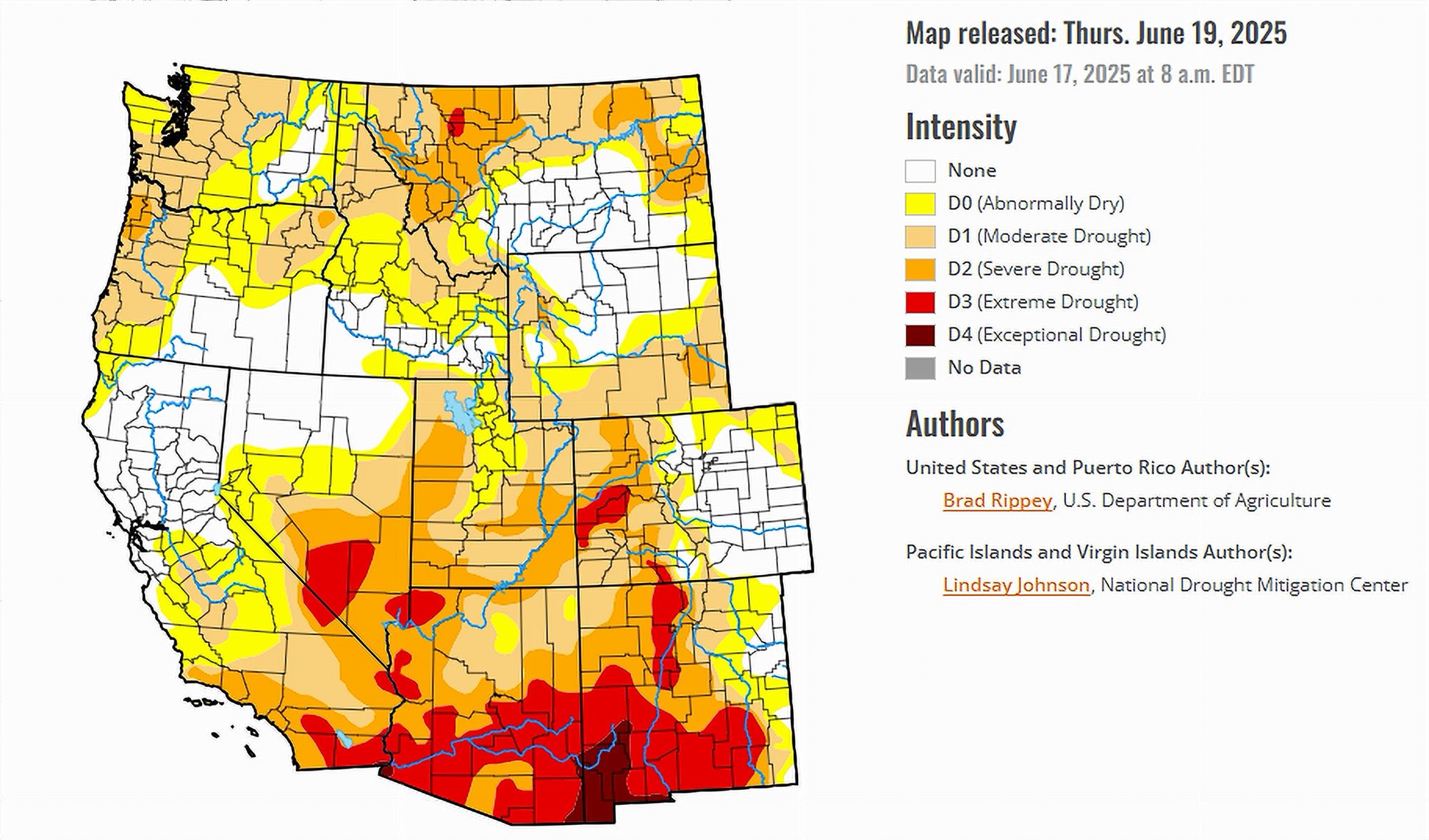- Wyoming reports 50% of topsoil is short on moisture.
- Wildfire risk rises as the Western U.S. stays dry.
- Rapid snowmelt adds to water supply concerns.
- Most drought improvement occurred east of the Rockies.
Saturday, June 21, 2025 –– While much of the central and eastern United States experienced a welcome reprieve from drought this past week, conditions across the Western U.S. continue to worsen. The latest U.S. Drought Monitor , released June 19, 2025, notes that states west of the Rockies are entering summer under mounting stress from heat and dryness.
, released June 19, 2025, notes that states west of the Rockies are entering summer under mounting stress from heat and dryness.
Wyoming: Half the State Faces Topsoil Moisture Deficit.
Of all seven basin states, only Wyoming had current topsoil moisture conditions documented in the latest report. As of June 15, the U.S. Department of Agriculture reported that 50% of Wyoming’s topsoil was rated very short to short. Additionally, 36% of the state’s rangeland and pastures were rated in very poor to poor condition, indicating growing challenges for livestock producers and land managers.
Arizona, Nevada, and New Mexico: No Measurable Rainfall Relief.
Although the U.S. Drought Monitor did not provide new quantitative data for Arizona, Nevada, or New Mexico this week, the report stated that “mostly dry weather dominated the West during the drought-monitoring period.” In these typically arid states, the lack of rain during early summer raises concerns for agriculture, groundwater recharge, and fire management.
California and Utah: Affected by Regional Dryness.
California and Utah were also included in the region described as having “rapid surface drying and prematurely melting (or melted) snowpack,” which has created “a variety of agricultural and water-supply issues and concerns.” However, no state-specific data or updated drought classification changes were reported for these two states in this week’s summary.
Colorado: Conditions Stable But Unchanged.
Colorado was not specifically highlighted in the June 19 update, either in terms of drought expansion or improvement. However, it falls within the zone impacted by the broader Western heat wave and ongoing dryness.
Rising Fire Danger and Water Supply Stress.
The report emphasized that across the Western United States, dry soils, reduced snowpack, and early summer heat are boosting irrigation demand, elevating fire danger, and placing added pressure on both surface and groundwater resources. Though no major fire outbreaks were noted in the seven basin states during the monitoring period, the potential remains high, particularly as vegetation dries and temperatures remain above seasonal averages.
Outlook: Little Relief Ahead
Looking ahead, the forecast calls for continued hot and dry conditions across much of the West, though isolated areas in the Southwest may receive some moisture next week from remnant tropical activity. According to the National Weather Service, “near- or above-normal rainfall” is possible from the Southwest into the Great Lakes region during the June 24–28 period, but much of the Colorado River Basin remains outside the areas with high precipitation probability.

